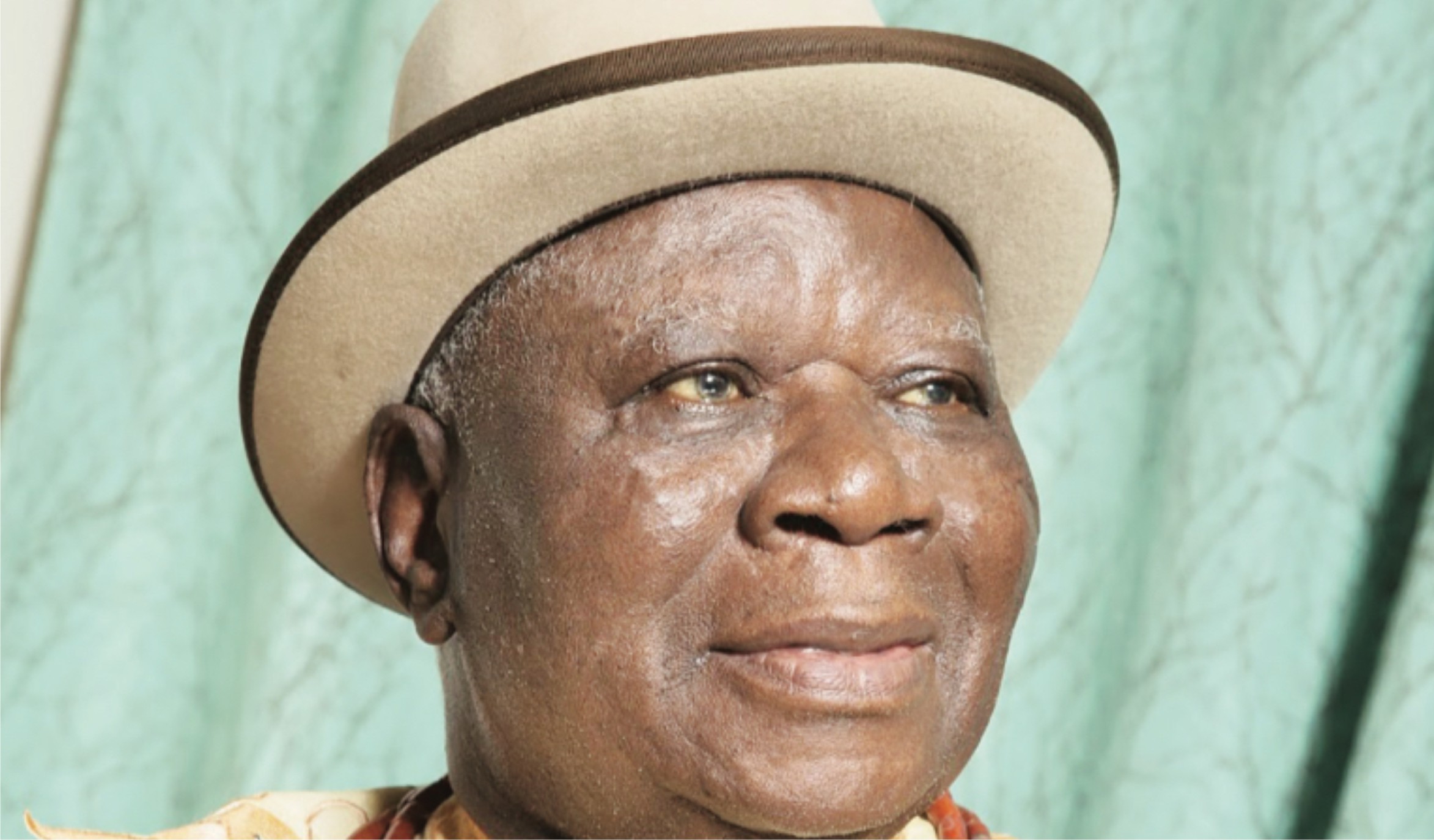Oil & Energy
‘FG Spent N487bn On Terminal Benefits To Ex-PHCN Workers’
The Director-General
of Bureau of Public Enterprises (BPE), Mr Benjamin Ezra Dikki has disclosed that Federal Government spent the sum of N487,000,000,000 to offset the terminal entitlements of former workers of the Power Holding Company of Nigeria (PHCN).
The D-G revealed this at a meeting with the Senior Staff Association of Communications, Transport and Corporations (SSACTAC), an affiliate of the Trade Union Congress (TUC) in Abuja.
Dikki said that though the whole proceeds of $2.6 billion about (N442,000,000,000) from privatisation of PHCN was not enough, but that the government had to go for additional N45 billion from the Federal Treasury.
He said one of the reasons the Federal Government decided to reform the housing sector was to ensure regulatory standard in the industry.
Dikki noted that reforms would introduce regulation in the housing sector to ensure standards as obtainable in the telecommunications, electric power and other key sectors of the economy.
He explained that the objective of the reforms in Nigeria’s housing sector was to ensure that the sector becomes vibrant, utilises local content and facilitates private sector investment.
He said government will always take cognizance of labour issues hence the inclusion of labour leaders in the membership of the National Council of privatisations (NCP) and the Steering Committee in the Restructuring of the Housing sector what he regarded as key in the development of the nation’s economy.
Responding, the President- General of SSACTAC, Mohammed Ynusa, said that FHA had in the past discharged its mandate satisfactorily but was presently hamstrung by poor funding.
Meanwhile the Minister of Power, Prof Chinedu Nebo has restated that Nigeria will generate 5,000 megawatts of power by May next year to stabilise electricity supply in the country.
He said there had been improved supply and that power generation had reached 4,500 megawatts.
Nebo who spoke Thursday at the singing of the contract for Ebonyi Independent Power Plant urged Nigerians to be patient and thankful for what is happening in the power sector so far.
According to him, there was about 2.7 million metres needed in Nigeria to satisfy consumers and added that the ministry wanted to put in place, mechanism that would enable the people to get the pre-paid metre.
Oil & Energy
FG, MEMAN Chart Ways To Safe Petroleum Products Delivery

The Federal Government and key Petroleum Products marketers have proposed new measures to help curb rising cases of road accidents involving petrol tankers.
This followed recent incidents of road accidents resulting in cremation of hundreds of lives and causing extensive damage to properties.
Speaking at the Discourse organised by Mejor Energy Marketers Association of Nigeria (MEMAN) in Lagos, Thursday, with the theme “Improving Safe Transportation of Petroleum Products”, the Minister of State for Petroleum Resources (Oil), Heineken Lokpobiri, noted with dismay the number of casualties the country recorded recently due to tanker accidents.
Lokpobiri stressed the need for an enhanced training for tanker drivers, installation of detection leak devices as well as other safety systems that can assist drivers.
He called on Marketers and Federal Road Safety Commission (FRSC) to strengthen collaboration with stakeholders, especially in the training of tanker drivers.
On his part, the Minister of State for Petroleum Resources (Gas), Ekperikpo Ekpo, reaffirmed government’s commitment to providing enabling environment to ensure safety of petroleum products transportation.
Ekpo, who was represented by Engr. Abel, said consideration should be given to more safety means of transporting products like the pipelines and railway line.
He stressed the need for better training for drivers and implementation of safety regulations within the industry.
Earlier, Chairman, MEMAN, Huub Stokman, said the Association has elaborate training manual for members truck drivers.
Stokman insisted that more training programmes and consistent adherence to safety measures would help to curb road accidents involving tanker drivers.
Also speaking, the National President, Nigerian Association of Raod Transport Owners (NARTO), Yusuf Lawal Othman, called for support.
Oil & Energy
Benue To Pioneer Gas Production From Coal – NGEP

The Chairman, National Gas Expansion Programme (NGEP), Prof. Mohammed Ibrahim, has said that the production of coal bed methane, an unconventional form of natural gas extracted from coal, is set to begin in Benue State.
Prof. Ibrahim staed this while addressing newsmen at the end of a joint meeting of the National and State gas expansion committees with Benue State Governor, Hyacinth Alia.
He said the Federal Government is committed to expanding gas availability in Nigeria for domestic use and mobility.
Ibrahim added that extracting gas from unconventional coal sources rather than traditional hydrocarbon reserves is a way to boost gas availability.
“Essentially there are four areas of implementation that the committee has identified. One is to pioneer the production of gas from what you call coal bed methane, which means that Benue is going to pioneer in the country the production of gas not from conventional hydrocarbon, but from non-conventional coal just so that the nation will have an alternative source to gas availability”, he said.
Also speaking, the Chairman, Benue State Gas Expansion Programme, Dr. Emmanuel Chenge, said the gas expansion initiative would contribute to the economic transformation of Benue State.
“The good news is that Benue is set to join the league of gas-producing states and if we are conversant with what being a member of the gas-producing state is, it shows that Benue State will start getting derivatives from that sector of the economy”, Dr Chenge stated.
The National Gas Expansion Programme (NGEP) was established to boost the exploration and utilisation of gas in Nigeria and make Nigeria a gas-based industrial nation by increasing the use of gas for transportation, cooking, and industrialization.
Oil & Energy
NNPC Debunks Explosion Claim In Warri Refinery

The Nigeria National Petroleum Company Limited (NNPCL) has said there was no explosion at the newly refurbished Warri Refining and Petrochemical Company (WRPC).
NNPCL’s Chief Corporate Communications Officer, Olufemi Soneye, made this known in a statement issued on Friday night.
Soneye said reports claiming that there was an explosion at the Warri refinery were false and should be ignored and disregarded by the public.
According to him, the refinery was undergoing routine maintenance.
His statement read, “NNPC Ltd. wishes to clarify that there was no explosion at the Warri Refining and Petrochemical Company (WRPC). Any reports suggesting otherwise are completely false.
“On January 25, 2025, operations at WRPC Area 1 were intentionally curtailed to carry out necessary intervention works on select equipment, including field instruments that were impacting sustainable and steady operations.
“These intervention works are essential to ensure the production of on-specification finished and intermediate products, particularly Automotive Gas Oil (AGO) and Kerosene (Kero).
“The routine maintenance is progressing as planned, and Area 1 will be back in operation within the next few days.
“Despite ongoing interventions, over the past 11 days, AGO loading has been maintained at an average of eight trucks per day, with a sufficient supply available to sustain ongoing truck load-out operations”.
Soneye added that the NNPCL was committed to ensuring an uninterrupted supply of petroleum products from the refinery.
He said the company “appreciates the patience and cooperation of all stakeholders as it completes these essential maintenance activities”.
-

 News5 days ago
News5 days agoFubara Expresses Grief, Commiserates With Family Over Death Of Pa Edwin Clark
-
Business5 days ago
LCCI Urges FG To Reduce Inflation Through Improved Petrol Export
-

 Niger Delta5 days ago
Niger Delta5 days agoUNICAL VC Institutes Scholarship To Reward Academic Excellence
-
Features5 days ago
A Farewell To Arms In Ogoni
-
Sports5 days ago
Aruna Eyes Title Defence, W’Cup At African Cup
-
Politics5 days ago
2027: SDP Advocates Principles-Based Alliances For Good Governance
-

 Featured5 days ago
Featured5 days agoTinubu, Buhari, Others Mourn As Edwin Clark Dies At 97
-
Business5 days ago
NCDMB, Starzs Gas Upbeat On Industrialisation …Unveil CNG Project In Delta

